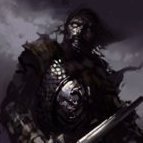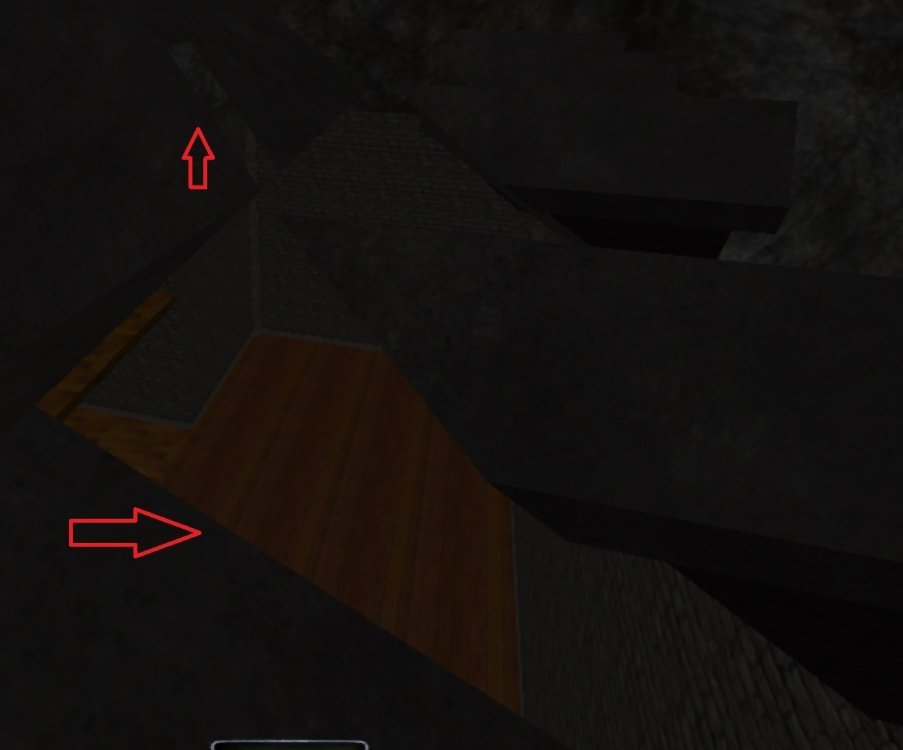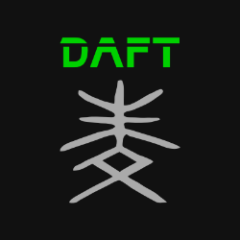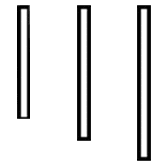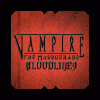Search the Community
Showing results for '/tags/forums/doom 3/'.
-
If any mappers have encountered weirdness with kill objectives not working with drowning AI, I think I've found out why. I don't think it would be a particularly difficult one to fix either. I've raised this bug report: https://bugs.thedarkmod.com/view.php?id=6323 Some context here: https://forums.thedarkmod.com/index.php?/topic/21837-fan-mission-the-lieutenant-2-high-expectations-by-frost_salamander-20230424/&do=findComment&comment=487316 I think this is a bug, but just raising here in case some people think otherwise.
-
- 1
-

-
I dom't use it, i found it here with the filter set to OpenSource. the TOS and PP isn't excluding for an OpenSource app, if they use ads mean that they also need to pay an server for this online service. OpenSource is not synonymous with free either, perhaps after the beta phase it is no longer free, so perhaps you can take advantage of the fact that it is still free to create a series of textures that can be used or search another one in Futuretools. AI generated textures and assets, by definition, don't have any copyright, so you can use them as you want. https://www.futuretools.io/?pricing-model=free|open-source&tags-n5zn=gaming
-
Hello TDM-ers. I am encountering an issue where textures seem to partially disappear. I tried searching the forums, but, I don't know what to search for. The missing textures are a worldspawn brush acting as a roof with {for now} flat iron texture. There are other worldspawn brushes right below to create an attic ceiling with roof framework board texture. These gaps appeared a few edits ago. I can't "undo" to get back before whatever edit did this. The gaps are only visible during play and are not visible during editing. Closing and reopening DR and TDM do not fix anything. Some of the brushes overlap in areas behind the play area but I have never seen an issue doing that. The attached image has the effect I am now seeing. Ideas on where to start debugging this? Very much appreciated. Clint
-

Beta testers wanted: The House of deLisle (by thebigh)
thebigh replied to thebigh's topic in Fan Missions
Awesome! Post is up! https://forums.thedarkmod.com/index.php?/topic/22200-beta-testing-the-house-of-delisle/#comment-487365 Thanks! -
Complaint From Players The player must pick up candles before extinguishing them, and then the player must remember to drop the candle. The player must drag a body before shouldering it (picking it up), and the player must remember to frob again to stop dragging the body. The player finds this annoying or easy to make mistakes. For players who ghost, some of them have the goal of returning objects back to their original positions. With the current "pick up, use item, and drop" system, the item might not return easily or at all to its original position. For example, a candlestick might bounce off its holder. (See player quotes at the bottom.) Bug Tracker https://bugs.thedarkmod.com/view.php?id=6316 Problems to Solve How can the "pick up" step be eliminated so that the player can directly use or interact with the item where it is in the game world? How can so much key pressing and mouse clicking be eliminated when the player wants to directly use an item? How can candles be extinguished and lanterns toggled off/on without first picking them up? How can bodies be shouldered without first dragging them? Solution Design Goals Make TDM easier for new players while also improving it for longtime players. Reduce tedious steps for common frob interactions. Make it intuitive so that menu settings are unnecessary. Do not introduce bugs or break the game. Terms frob -- the frob button action happens instantly. hold frob -- the frob button is held for 200ms before the action happens. (This can be changed via cvar: 200ms by default.) Proposed Solution Note: Some issues have been struckthrough to show changes since the patch has been updated. Change how frobbing works for bodies, candles, and lanterns. For bodies: Frob to shoulder (pick up) a body. Second frob to drop shouldered body, while allowing frob on doors, switches, etc. Hold frob (key down) to start drag, continue to hold frob (key down) to drag body, and then release frob (key up) to stop dragging body. Also, a body can be dragged immediately by holding frob and moving the mouse. For candles/lanterns: Frob to extinguish candles and toggle off/on lanterns. Hold frob to pick it up, and then frob again to drop. Frob to pick it up, and then frob again to drop. Hold frob to extinguish candles and toggle off/on lanterns. For food: Frob to pick it up, and then frob again to drop. Hold frob to eat food. For other items: No change. New cvar "tdm_frobhold_delay", default:"200" The frob hold delay (in ms) before drag or extinguish. Set to 0 for TDM v2.11 (and prior) behavior. Solution Benefits Bodies: New players will have less to learn to get started moving knocked out guards. With TDM v2.11 and earlier, some players have played several missions before realizing that they could shoulder a body instead of dragging it long distances. Frob to shoulder body matches Thief, so longtime Thief players will find it familiar. Second frob drops a shouldered body. Players still have the ability to both shoulder and drag bodies. Compatible with the new auto-search bodies feature. Dragging feels more natural -- just grab, hold, and drop with a single button press. There is no longer the need to press the button twice. Also, it's no longer possible to walk away from a body while unintentionally dragging it. Set "tdm_frobhold_delay" cvar to delay of 0 to restore TDM v2.11 (and prior) behavior. Candles: New players will have less to learn to get started extinguishing candles. With TDM v2.11 and earlier, some players didn't know they could extinguish candles by picking them up and using them. Instead, they resorted to throwing them to extinguish them or hiding them. Hold frob to extinguish a candle feels like "pinching" it out. Once a candle is picked up, players still have the ability to manipulate and use them the same way they are used to in TDM v2.11 and earlier. For players who ghost and have the goal of putting objects back to their original positions, they'll have an easier time and not have to deal with candles popping off their holders when trying to place them back carefully. Set "tdm_frobhold_delay" cvar to delay of 0 to restore TDM v2.11 (and prior) behavior. Solution Issues Bodies: Frob does not drop a shouldered body, so that might be unexpected for new players. This is also different than Thief where a second frob will drop a body. "Use Inv. Item" or "Drop Inv. Item" drops the body. This is the same as TDM v2.11 and earlier. This is the price to pay for being able to frob (open/close) doors while shouldering a body. Patch was updated to drop body on second frob, while allowing frob on doors, switches, etc. Candles: Picking up a candle or lantern requires a slight delay, because the player must hold the frob button. The player might unintentionally extinguish a candle while moving it if they hold down frob. The player will need to learn that holding frob will extinguish the candle. The player can change the delay period via the "tdm_frobhold_delay" cvar. Also, when the cvar is set to a delay of 0, the behavior matches TDM v2.11 and earlier, meaning the player would have to first "Frob/Interact" to pick up the candle and then press "Use Inv. Item" to extinguish it. Some players might unintentionally extinguish a candle when they are trying to move it or pick it up. They need to make sure to hold frob to initiate moving the candle. When a candle is unlit, it will highlight but do nothing on frob. That might confuse players. However, the player will likely learn after extinguishing several candles that an unlit candle still highlights. It makes sense that an already-extinguished candle cannot be extinguished on frob. The official "Training Mission" might need to have its instructions updated to correctly guide the player through candle manipulation training. Updating the training mission to include the hold frob to extinguish would probably be helpful. Similar Solutions In Fallout 4, frob uses an item and long-press frob picks it up. Goldwell's mission, "Accountant 2: New In Town", has candles that extinguish on frob without the need of picking them up first. Snatcher's TDM Modpack includes a "Blow / Ignite" item that allows the player to blow out candles Wesp5's Unofficial Patch provides a way to directly extinguish movable candles by frobbing. Demonstration Videos Note: The last two videos don't quite demonstrate the latest patch anymore. But the gist is the same. This feature proposal is best experienced in game, but some demonstration videos are better than nothing. The following videos show either a clear improvement or that the player is not slowed down with the change in controls. For example, "long-press" sounds long, but it really isn't. Video: Body Shouldering and Dragging The purpose of this video is to show that frob to shoulder a body is fast and long-press frob to drag a body is fast enough and accurate. Video: Long-Press Frob to Pick Up Candle The purpose of this video is to show how the long-press frob to pick up a candle isn't really much slower than regular frob. Video: Frob to Extinguish The purpose of this video -- if a bit contrived -- is to show the efficiency and precision of this proposed feature. The task in the video was for the player to as quickly and accurately as possible extinguish candles and put them back in their original positions. On the left, TDM v2.11 is shown. The player has to highlight each candle, press "Frob/Interact" to pick up, press "Use Inv. Item" to extinguish, make sure the candle is back in place, and finally press "Frob/Interact" to drop the candle. The result shows mistakes and candles getting misplaced. On the right, the proposed feature is shown. The player frobs to extinguish the candles. The result shows no mistakes and candles are kept in their original positions. Special Thanks @Wellingtoncrab was instrumental in improving this feature during its early stages. We had many discussions covering varying scenarios, pros, and cons, and how it would affect the gameplay and player experience. Originally, I had a completely different solution that added a special "use modifier" keybinding. He suggested the frob to use and long-press frob to pick up mechanics. I coded it up, gave it a try, and found it to be too good. Without his feedback and patience, this feature wouldn't be as good as it is. Thank you, @Wellingtoncrab! And, of note, @Wellingtoncrab hasn't been able to try it in game yet, because I'm using Linux and can't compile a Windows build for him. So, if this feature isn't good, that's my fault. Code Patch I'll post the code patch in another post below this one so that folks who compile TDM themselves can give this proposal a try in game. And, if you do, I look forward to your feedback! Player Complaints TTLG (2023-01-10) Player 1: TDM Forums (2021-03-13) Player 2: Player 3: TDM Forums (2023-06-17) Player 4: TDM Discord (2021-05-18) Player 5: TDM Discord (2023-02-14) Player 6: Player 7: Player 8:
- 336 replies
-
- 12
-

-

-
The *DOOM3* shaders are ARB2 ('cause of old GeForce support) carmack plan + arb2 - OpenGL / OpenGL: Advanced Coding - Khronos Forums
-

[Feature discussion] Depth of Field effect
Wellingtoncrab replied to MirceaKitsune's topic in The Dark Mod
There is a whole mess of graphics mods for Doom 3 you could peek at. Sikkmod for example is not based off BFG and has a depth of field effect when reloading weapons which sounds like basically what you are looking for and I doubt it requires engine level changes to work: At a minimum you could download one of these mods and given doom3 stuff is typically all text formats in .pk4s there might be enough there you can just read to figure out how it works. As far as it’s potential inclusion in the game I have no real opinion - though given it would likely be optional I don’t see it hurting anything either. -

Bump maps not blending in vertex blended materials
nbohr1more replied to grodenglaive's topic in TDM Tech Support
Seems to confirm: https://bugs.thedarkmod.com/view.php?id=5718 does it happen in the latest dev build: https://forums.thedarkmod.com/index.php?/topic/20824-public-access-to-development-versions/ -
I just read@motorsep Discovered that you are able to create a brush, then select it and right click "create light". Now you have a light that ha the radius of the former brush. Just read it on discord and thought it may be of use for some people in the forums here too.
-
I just found this thread on ttlg listing Immersive Sims: https://www.ttlg.com/forums/showthread.php?t=151176
-
Recently revisiting the forums after a longer period of time I wanted to check the unread content. I don't know if I am doing this wrong since.. ever... but on mobile (visiting the unread content page on my smartphone) you have to click on that tiny speech bubble to go to the most recent post in a thread. If you don't click correctly you'll hit the headline and end up at post 1 in the beginning of the thread. It's terrible on mobile, since not only the speech bubble is really small and was to miss. But also the thread headline is just millimeters away from it so you go right to the first post that was ever made instead of the most recent ones. Am I doing it wrong? I just want to go through u read content a d the to the newest post from that topic.
-
A@datiswous Ah yeah, well sorry, I was quiet busy and only visiting discord. First time here on the forums since months now I think.. Thank you for the subtitles. I encourage everyone who is interested in using them to download it from here as I'm not sure when I'll be able to implement them myself into the mission. Again, thank you for your work.
- 223 replies
-
- 2
-

-
- contest
- fanmission
-
(and 2 more)
Tagged with:
-
I'm a little surprised that a direct file reference doesn't work but OTOH many Doom 3 conventions prefer def inheritance over direct file references. For example, particle textures.
-
For example while you have respawning enemies you also have respawning energy so you won't need to play half of the game using a wrench only because you are out of ammo or your weapons have broken. Also the maze layout fits much better to a space station than a space ship and it is kind of reasonable that you don't meet anybody alive, while SS2 teases and disappoints you again and again with the same trick. Of course it is a matter of taste, but for me coming from Half-Life at the time SS2 felt like a step back, while I can understand now why SS coming closely after Doom is considered a classic.
-
The idea is to deprecate Doom 3 style "parallel" light. Use "parallelSky" light instead. And if you want the light to have shadows, then: make it global, i.e. cover the whole world make sure portalsky material marks the sky instead of caulk or anything else hope that it works
-
Of course, it is one of the reasons for the decline of online forums, since the advent of mobile phones. Forums on a mobile are a pain in the ass, but on the other hand, for certain things there are no real alternatives to forums, social networks cannot be with their sequential threads, where it is almost impossible to retrieve answers to a question that is asked. has done days ago. For devs for internal communication, the only thing offered is a collaborative app, such as System D (not to be confused with systemd). FOSS, free and anonymous registration, access further members only by invitation, full encrypted and private. https://www.system-d.org
-
Ignoring is somewhat inadequate as you still see other members engaging in a discussion with the problematic user, and as Wellingtoncrab says such discussions displace all other content within that channel. Moderation is also imperfect as being unpleasant to engage with is not in itself banworthy, so there is nothing more to do if such people return to their old behaviour after a moderator had a talk with them, except live with it or move away. I'd be more willing to deal with it if it felt like there were more on-topic discussion, i.e. thoughts about recently played fan missions or mappers showcasing their progress, rather than a stream of consciousness about a meta topic that may or not have to do with TDM. I guess the forums already serve the desired purpose, or they just compartmentalise discussions better.
-
I think we should deprecate parallel lights. The way they are implemented in Doom 3 only works intuitively if it is fully contained in a single visportal area, which is rarely the case. Otherwise, there are huge issue with area-portal graph and shadows. For something global like moonlight, the new parallelSky light should be used. If it is contains the whole level in its light volume, then the behavior should be well-defined as long as portalsky material is used to seal levels from the sky (not caulk or something similar). The light is supposed to come through the portalsky surfaces into all areas in this case. Are there any other usages of parallel lights?
-
Arguably, the objection to the flashlight in Doom3 was that it prevented playing the game in a run n' gun style that old Doom players craved. Doom 3 survival horror purists have rebuked both the flashlight mod and BFG exactly because removing the toggle decreases the tension and makes the game more confrontational rather than stealthy. TDM also prefers stealth but we usually rely on other mechanics to enforce it. Still, this is a neat option to increase the scare factor.
-
I just stumbled upon this thread (because I saw that snatcher is involved which is always exciting ) but I wonder why we would want a lamp that can not be used at the same time as a weapon? This brings back memories of the stupid Doom 3 flashlight which did the same thing just for jumpscares. So if you really want to show a visible lamp, can't the player hold it in his left hand while the right one is still free at least for blackjack, sword and to pick up items?
-
In order to better discuss performance, please look into this article: https://wiki.thedarkmod.com/index.php?title=Tracy:_timeline_profiler#Gameplay Perhaps inspect some Tracy records too. The game consists of four main parts, most of them run in parallel: game modelling renderer frontend renderer backend GPU Let's suppose n-th part consumes Tn milliseconds of time on some interval, then the interval takes min(t1 + t2, t3, t4) of time in total. Usually either p.1 + p.2 or p.4 are bottleneck. If you try doing less updates, you cannot make renderer backend and GPU faster: it still has to render all the stuff every frames. Except for something like reusing shadow maps between frames, which is not implemented yet. You can make game modelling faster if some entities skip thinking. The most time-consuming entities are AIs, and this kind of optimization is applied to them since the very beginning of TDM, known as "interleaded thinking optimization" (Doom 3 had similar but stronger "dormancy" concept). If an AI is behind closed doors and far from player, then he thinks rarely, e.g. 3 times per second. You can use cv_ai_opt_forceopt cvar to experiment with it. It took much effort to make this work reliably, but without it TDM should be very slow on anything but small levels. And this optimization caused some headache later, for instance it caused distant AIs to randomly die with uncapped and low FPS. All the other entities think every frame, as far as I know. Some entities are known to be dangerous to think rarely: that's mostly physics-related things like ropes and ragdolls. Another thing is that many entities spend negligible time in their Think methods, and most entities don't think at all (only "active" entities think, see listActiveEntities command). Speaking of renderer frontend, you can update entities less often. Then you can reduce time on understanding which areas entities belong to, and on generating interactions (that's the main part I think). However, there are parts of frontend which are view-dependent, so they need to run every frame. You can experiment with cvar r_skipUpdates. As far as I understand, it disables all updates of render entities/lights from game code. The game modelling still runs, guards still move around, see you, speak, chase you, and kill you. But renderer displays the obsolete state of the world from the moment when you set the cvar.
-
Apparently it's opt-in though. I don't have a problem with features like this, as long as they are opt-in and clearly explained. Recently I got a smart TV and I was stunned and amazed how non-hostile, straightforward and user-friendly the setup process was. It didn't try to force me to do anything I don't want to do, like connect to the Internet. Instead of saying "let's connect to the Internet", it said "Would you like to connect to the Internet?". And there was a "no" button, not a "maybe later" button. Also it boots up to the HDMI port extremely quickly; even faster than my ten year old dumb TV. It takes 3 seconds at most. So yeah, there's doom and gloom in my mind about TVs eventually not letting you use the inputs until you opt in to all the tracking, and perhaps coming with a cellular radio for spying that you can't disable, but we are fortunately not there yet. https://www.consumerreports.org/electronics/privacy/how-to-turn-off-smart-tv-snooping-features-a4840102036/
-
I don't recall a system for noise masking. It sounds like it'd be a good idea, but when you get into the details you realize it'd be complicated to implement. It's not only noise that that goes into it, I think. E.g., a high register can cut through even a loud but low register rumble. And it's not like the .wav file even has data on the register of what it's playing. So either you have to add meta-data (which is insane), or you have to have a system to literally check pitch on the .wav data and paramaterize it in time to know when it's going to cut through what other parameters from other sounds. For that matter, it doesn't even have the data on the loudness either, so you'd have to get that off the file too and time the peaks with the "simultaneous" moment at arbitrary places in every other sound file correctly. And then position is going to matter independently for each AI. So it's not like you can have one computation that works the same for all AI. You'd have to compute the masking level for each one, and then you get into the expense you're mentioning. I know there was a long discussion about it in the internal forums, and probably on the public subforums too, but it's been so long ago now I can't even remember the gist of them. Anyway the main issue is I don't know if you'll find a champion that wants to work on it. But if you're really curious to see how it might work, you could always try your hand at coding & implementing it. Nothing beats a good demo to test an idea in action. And there's no better way to learn how to code than a little project like that. I always encourage people to try to implement an idea they have, whether or not it may be a good idea, just because it shows the power of an open source game. We fans can try anything we want and see if it works!
-
I'm using the version from kcghost. I just tested and I can't see any difference inside the inventory. On the stats itself it doesn't show the different loot types (still seen in the inventory), but instead gives more info on stealth score. Edit: I see Dragofer made an updated version of his script. I have to check that out. Edit2: That version works: https://forums.thedarkmod.com/applications/core/interface/file/attachment.php?id=21272&key=02755164a3bed10498683771fe9a0453
-
Right, so there is this one weird qwerk of classic Thief. If you beat an AI to death with the blackjack (I know, I know, but sometimes it's fun to fight this way because it's more of a challenge than using the sword) as though Thief was a Quake clone, the guard will scream and begin to drop. But if you quickly wack him again, he will pop up and play the "knocked out" sound, and then collapse again. So basically you killed him, and *then* you knocked him out! The natural question at this point, is how the stats would reflect such an oddity. I guess there is only one way to find out, but the problem is, there's usually more than one dead guard on the map when I play. Especially on Thieve's Guild. I go straight-up Doom on that one, and use the corpses to trace my steps around the confusing layout. The classic Thief guards aren't great fighters; they are especially vulnerable to circle strafing and lots of pelting. You can even get them completely turned around and facing the other direction! As long as you're in a relatively open space you can own them by doing this quite easily. This strategy will not work on TDM guards. Try this with them and you are the one that gets owned. lol
